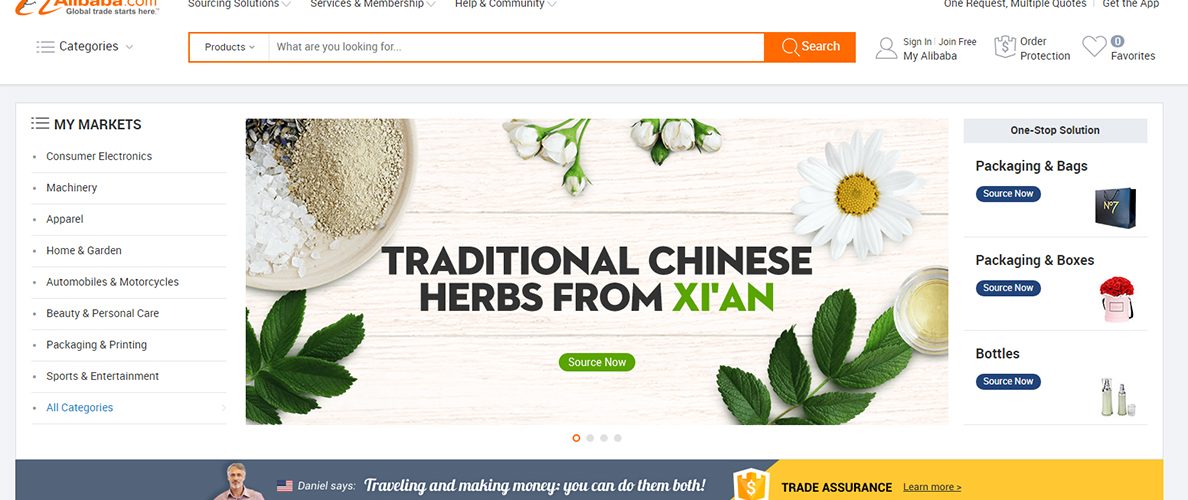When you first start your small or medium-sized business, you’re likely to focus on finding Canadian customers. When you’re ready to grow, the next step could be selling to international buyers.
Selling abroad opens a door to a wide world of fast-growing opportunities for businesses. Research shows that the e-commerce industry is growing by 20% each year worldwide, and will account for a 15% share1 of retail sales by 2020. It’s not just that more and more people are making online purchases, they’re also buying more often.
Where should you start?
Deciding where to sell internationally requires a little research. You’re looking for a target market that’s a good match for your mix of products and services.
Shoppers in some countries are already used to buying from Canadian businesses. China, the United Kingdom, and the United States are currently the top international purchasers of Canadian goods. These three populous nations represent inviting markets for growth.
Ultimately, your target market and product mix will determine how appropriate these countries are for your business. However, all three are worth considering given that customers in these countries already choose to buy from Canadian merchants.
Shoppers in the U.S. and U.K. have similar habits to their Canadian counterparts, and don’t pose linguistic or cultural barriers. They also enjoy favourable exchange rates, making purchases in Canadian dollars more attractive. Americans who buy from Canada have another incentive: an attractive duty threshold means purchases up to US $800 are duty-exempt. Nearly a quarter of Americans (22%) have already purchased from Canadian retailers, while almost three quarters (72 %) say they’d consider2 doing so.
Canada Post has the solutions to help your online store reach the world.
Contact an expertBy a wide margin, China is the most populous of these three countries. Although fewer than two thirds of Chinese people are currently connected to the internet, huge numbers of new buyers will soon be coming online as internet adoption continues to grow. With such rapid change about to happen, China’s blossoming market offers the greatest capacity for growth.
Tip
Don’t feel you have to take on the whole world at once. Start somewhere familiar, such as the U.S., or limit your international effort to just a few countries at first.
Know what people want to buy
Before trying to sell your goods in a new country, it helps to have a strong understanding of the types of products people tend to buy from foreign retailers. Shoppers in the U.S., U.K., and China mostly purchase apparel and accessories. In America and the U.K., toys and games are the second most popular category. In China, it’s cosmetics and beauty products.
Global shoppers often seek out certain items because they feel domestic choices lack variety or quality. These customers won’t mind waiting a little longer to receive a unique item or product from a foreign retailer. If quality and variety differentiate your products from those offered by foreign competitors, make sure to emphasize this added value.
Sell where customers are searching
Online marketplaces are fertile ground when it comes to finding international customers, so do what you can to make the most of them. Just like in Canada, marketplaces are a top destination for shoppers in the United Kingdom and the United States. In China, a whopping 90% of all e-commerce transactions3 happen on marketplaces.
Selling through a marketplace provides credibility, and gives your business the benefit of having an existing customer base as soon as you begin. Some marketplace sites also offer resources to help ensure your product offering meets the standard foreign buyers are looking for.

Source: Acapture – E-commerce infographic 2015 – Published 2016
In China nearly half of online purchases are made on Alibaba sites.3
It’s a global market
These days, Canadian retailers don’t just compete with one another, they compete with the world. Many foreign retailers are embracing e-commerce on a global scale, and some are already attracting the attention of Canadian shoppers. Cross-border expansion can help your business remain competitive in this new environment, and provide an important avenue for growth.
Want to learn more about how to tackle international sales? We break down the must-knows of cross-border shipping in our next blog.
Ready to start shipping internationally? Learn about the regulatory requirements you need to know in our final blog in this series.
Content for online merchants
Get the latest e-commerce tips, resources and news delivered right to your inbox.
Sign up now

